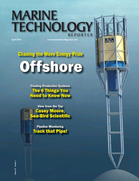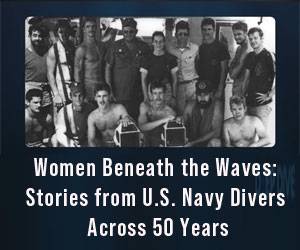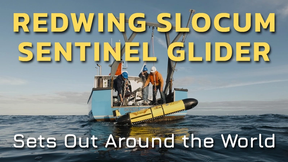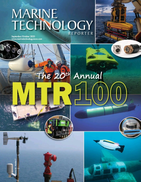Cambla: Soft Solutions for Hard Problems
By Alexander MacLeod, Project Services Manager, Cambla
As uncertainty around the fluctuating oil price remains, the industry must continue to evolve. It is more important now than ever that companies search for effective and innovative methods to streamline their processes, in order to adapt to the challenging climate. For those willing to develop technological advancements to meet the needs of the industry, there is still an abundance of opportunities available. Alexander MacLeod, Project Services Manager at independent project services consultancy, Cambla, discusses how the company has developed a cost effective and efficient solution to subsea planning challenges.
Challenging Industry Climates
There is no doubt that 2015 was one of the most challenging years the oil and gas industry has faced. As the drastic drop in the price of oil continues to affect companies across the globe, many businesses are looking at new ways to diversify and thrive during this difficult time. The development of new innovation and technology remains key for significant improvements in the industry moving forward.
At Cambla, we were quick to recognize that the fluctuating oil price has driven major oil operators to undertake more complex projects with the aim of boosting production to replace aging fields. These companies can no longer afford to risk any project oversights or delays and vessel operators are now under immense pressure to identify occasions where their fleet is not being utilized to its full potential.
Declining production in mature, shallow water basins has also led to an increase in subsea operations and resulted in operators deploying extra vessels to support more complicated field developments.
This has resulted in a significant rise in the number of vessels operating offshore, increasing the risk of multiple vessels arriving at the same location at the same time. If only one vessel can operate, the other would be delayed before commencing operations, or would be required to leave the field and return to port. Vessel operation costs are extremely high, ranging from £50,000 to £250,000 per day. Disruptions or delay to the planned schedule can result in a huge loss in production and significant costs for the operator.
In response to these challenges, Cambla developed state-of-the-art software to improve the accuracy and efficiency of planning subsea and marine operations. The Schedule Animation Tool (S.A.T.) is a multi-user application that provides an accurate visual representation of a vessel’s location and planned activities, making it easier for operators to understand Simultaneous Operations (SIMOPs), construction sequences and plan integrated operations across the globe.
We recognize that innovative technology is fundamental to sustaining the subsea market during the current downturn, and S.A.T is a particularly useful resource for companies operating a large vessel fleet or planning a complex subsea project, as it offers full fleet management support. The main benefit of using the tool is that it helps to eliminate any conflicts between vessels by showing where each vessel will be for the duration of the project and highlighting any issues. This allows schedules to be optimized so that operations are not interrupted or delayed, resulting in many hours of saved office time and a substantial saving in vessel costs.
The technology is a world-first developed to improve the accuracy of planning subsea operations, and significantly reduces the associated costs, time and safety risks. S.A.T allows project teams to align schedules and choose the most appropriate sequence of activities, ensuring delays and loss of production time are minimized.
Typically, paper-based Gantt chart schedules are used to plan vessel operations. However, this method is laborious and cumbersome, and is quickly becoming outdated and ineffective. S.A.T enables transformational schedule engagement across all project stakeholders by representing the schedule as an accurate animation, and removes the need for time-consuming analysis of paper-based schedules.
The Technology
The software works by taking the client’s schedule information from various sources or different formats and converting it into 4D models using Primavera P6 or Microsoft Project as the data repository. It will then identify occasions when vessels are required to be in close proximity to other vessels or installations. This in turn generates a list of relevant SIMOPs or close approach risk assessments required to be carried out in advance. Logistics are tested to understand port utilization and the checking of transit durations.
Operational on desktop and tablet browsers, Cambla can tailor the software to meet client requirements and create bespoke models to suit. The software can be easily and quickly updated when a current vessel schedule becomes available, ensuring the animation is updated on a regular weekly or monthly cycle.
Unlike paper-based schedules, the models can be accessed securely online by the whole project team, eliminating the need to transfer extensive paperwork.
S.A.T. has been designed to be web-based so it can be accessed anywhere, at any time, from any computer. This approach offers multiple-user access, which allows more than one team member to use the software at any one time, ensuring the whole project team is aligned to the same schedule. The information is stored centrally, eliminating the requirement to share files via email and ensuring the same data is displayed across the animation.
Upgrades and Future Development
The software was recently trialed with a major EPC company with the primary objective of gathering initial feedback to allow further improvements. We received a significant amount of valuable and positive feedback, and launched an upgraded version of the software in September 2015, following client demand.
A number of upgrades have been made to the new tool which offer increased fleet management capabilities, an enhanced data input system, a function to display fixed infrastructures including oil and gas platforms, FPSOs, and wind turbines and a listing of all scheduling issues. The animation models can now also be produced faster, significantly reducing the man-hours required to plan vessel operations.
As part of Cambla’s continued development process in 2016, we will be further enhancing the software with additional features. These will include:
- Additional object types – This will give the user the ability to add the correct shapes for drill rigs, jack ups and other objects, in order to model their behavior correctly
- Sequence checking – This feature will allow further automatic error checking of the schedule to ensure that activities carried out on various vessels are executed in the correct order
- Display of project infrastructure – This will allow the display of pipelines, umbilicals and cables, and their status, on the animation
- Progress monitoring – This feature will allow the user to see the progress of each piece of project infrastructure
- Schedule robustness reports – This is a new error check that will examine the quality of the schedule when ‘what-if’ changes are applied
- Exportable error reports – This will allow the comprehensive error reports that are already produced to be exported for easier distribution, and to allow necessary modifications to be actioned quickly
- Revision of the screen layout – This revision will ensure more efficient use of the screen to allow for maximum information to be displayed
- Scaling of vessels – New high zoom levels will provide a true scale animation of vessels and infrastructure, to effectively and thoroughly monitor their statuses
- Animation legend – This feature will further enhance the user’s ability to identify each vessel and its purpose




 August 2025
August 2025



